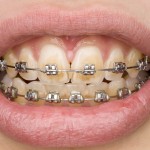
A typical course of orthodontic treatment last approximately two years. Prolonged treatments can reduce compliance and also increase the risk of adverse effects such as white spot lesions. In recent years a range of surgical and non-surgical approached to accelerating treatment have been introduced.
The aim of this review was to evaluate the effectiveness of vibrational stimulus to accelerate orthodontic tooth movement.
Methods
Searches were carried out in the PubMed, Embase, Cochrane Central Register of Con- trolled Trials (CENTRAL), and System for Information on Grey Literature in Europe (SIGLE) databases. Randomised controlled trials (RCTs) and controlled clinical trials (CCTs) evaluating the effectiveness of vibrational stimulus on orthodontic tooth movement published in English were considered. Two reviewers independently selected studies, abstracted data and assessed risk of bias. The Cochrane Collaboration tool was used to assess risk of bias and overall quality of evidence assessed using the GRADE system. A narrative summary was presented.
Results
- 8 studies (7RCTs 1 CCT) involving a total of 305 patients were included.
- 2 studies were considered to be at low risk of bias, 4 unclear risk and 2 at high risk.
- 6 studies used Accele-Dent (OrthoAccel Technologies, Inc., Bellaire, TX).
- There were substantial differences in vibration parameters, type of tooth movement and outcome measurements among included studies.
- Only 2 studies reported differences in favour of vibrational stimulus. This was only significant in 1 study of canine retraction.
- The overall quality of the evidence was considered to be very-low
Conclusions
The authors concluded: –
Based on current information, weak evidence suggests that vibrational stimulus is effective for accelerating tooth movement in canine retraction but not in the alignment phase. The effects of vibration on pain intensity and root resorption during orthodontic treatment are inconclusive. There is a need for well-designed randomized controlled trials to obtain more reliable results.
Comments
The Cochrane Oral Health Group review non-surgical interventions to accelerate orthodontic treatment in 2015 (Dental Elf – 23rd Nov 2015). They only included 2 RCTs both of which are included in this current review. Although a number of trials included in this new review have been published since the Cochrane review they are small and of short duration and as the authors note the overall quality of the available evidence is very low. Consequently, there is still a need for well-designed and rigorous RCTs with longer follow-up periods to determine if non-surgical interventions including vibrational stimulus can deliver clinically meaningful reductions in the length of orthodontic treatment.
Links
Primary Paper
The effectiveness of vibrational stimulus to accelerate orthodontic tooth movement: a systematic review. Dian Jing, Jiani Xiao, Xiaobing Li, Yu Li and Zhihe Zhao BMC Oral HealthBMC series – open, inclusive and trusted 201717:143
Other references
Dental Elf – 23rd Nov 2015

[…] Orthodontic treatment- can a vibrational stimulus shorten treatment times? […]